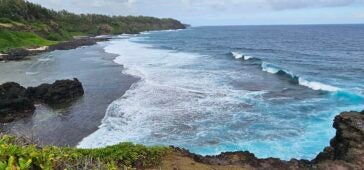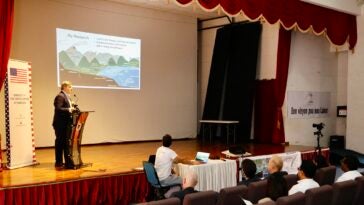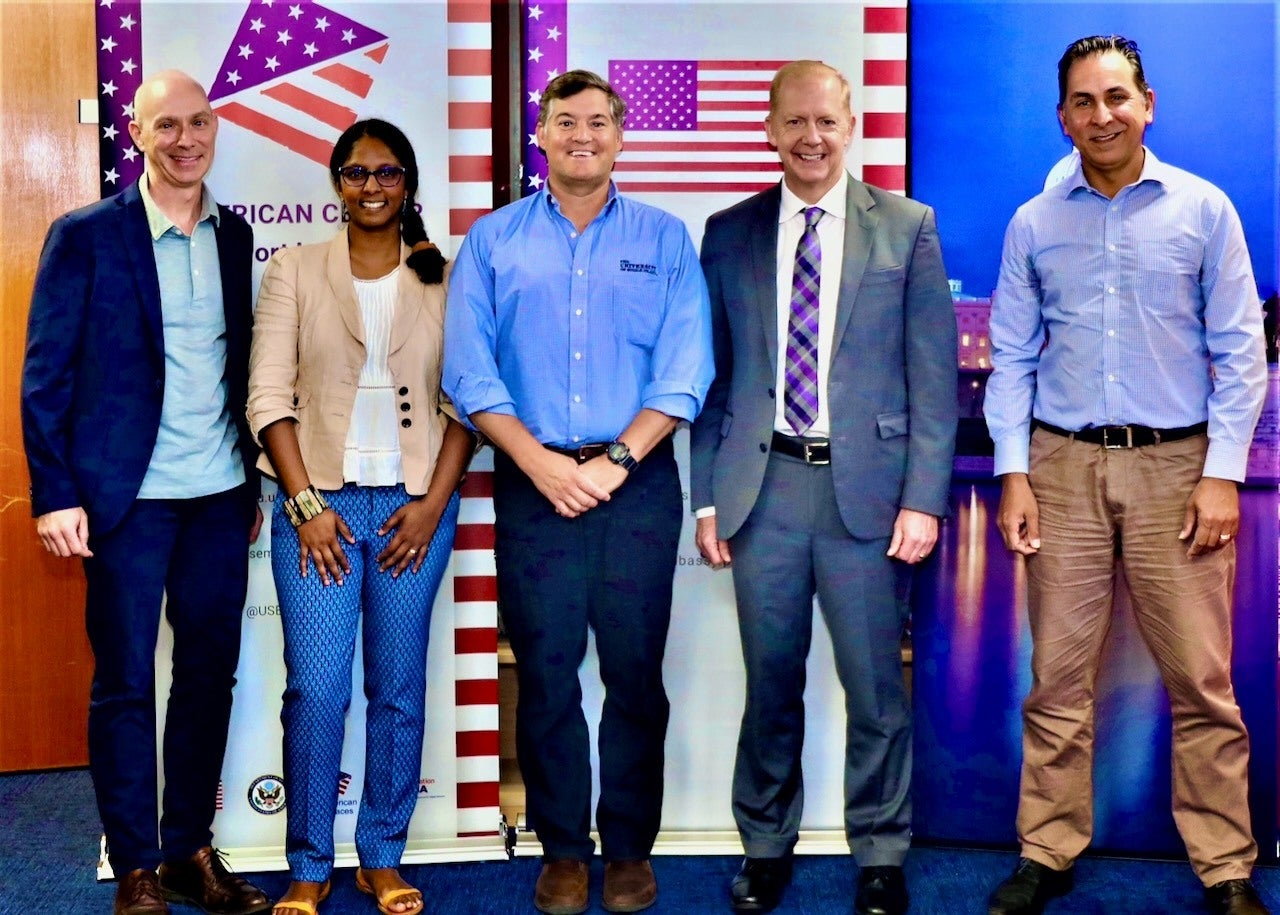Oct. 31, 2023
J.P. Walsh, director of the University of Rhode Island’s Coastal Resources Center and professor at the Graduate School of Oceanography, recently traveled to Mauritius, an island country located 500 miles east of Madagascar, as part of the Fulbright Specialist Program. His visit centered on a project in partnership with MRU 2025, a non-government organization dedicated to the protection, preservation and restoration of Mauritius’s coastal zones.
In late September, a diverse group from Mauritius’s public and private sectors, NGOs, research institutions and the diplomatic community gathered at the Rajiv Gandhi Science Center for a day-long workshop to discuss a sustainable long-term vision for the country’s coastal regions. Many speakers shared science and perspectives on the past, present and future coast, including habitat loss, flood risks and development concerns.

Walsh presented the work of the Coastal Resources Center, Graduate School of Oceanography, and their partners, drawing upon his experience in coastal zone management from extensive field research in locations including Papua New Guinea, West Africa and coastal regions of the United States. Participants discussed their vision for the Mauritian coast, specifically near the community of Bel Ombre on the south coast. “It was an important event,” said Walsh. “Everyone expressed many concerns about ongoing coastal development, and great interest in finding a pathway to sustainable coastal prosperity and improving coastal management in the island nation.”
Mauritius served as the focus for Walsh’s Fulbright Specialist program award, an honor granted to individuals based on their academic and professional achievement, demonstrated leadership in their field and their potential to foster long-term cooperation between institutions in the U.S. and abroad. He is one of 400 U.S. citizens who share their expertise and collaborate with host institutions around the world as part of the program.
During his two-week visit, Walsh collaborated closely with a team of Mauritius-based experts, including MRU 2025 co-founder Yan Hookoomsing, and program coordinator Carina Grounden. Together, they planned the workshop and outlined a comprehensive framework for engaging multiple stakeholders to address the impacts of climate and coastal change, with the ultimate goal of environmental sustainability for generations to come.

“My visit to Mauritius was intense and incredible,” Walsh said. “It was an absolute honor and pleasure to work with so many great people who are working hard to conserve their coast for all to enjoy. And I’m very happy that MRU is continuing its efforts to achieve better coastal zone management in Mauritius. I really hope they succeed at creating a Coastal Geopark along the wild south coast of the country where volcanic mountains are carved by waterfalls, and massive waves and coral reefs create an impressive coast. As in Rhode Island, I hope the people of Mauritius will keep its coast as a priority for the future.”
This story was written by Mackensie duPont Crowley, digital communications coordinator with URI’s Graduate School of Oceanography.

